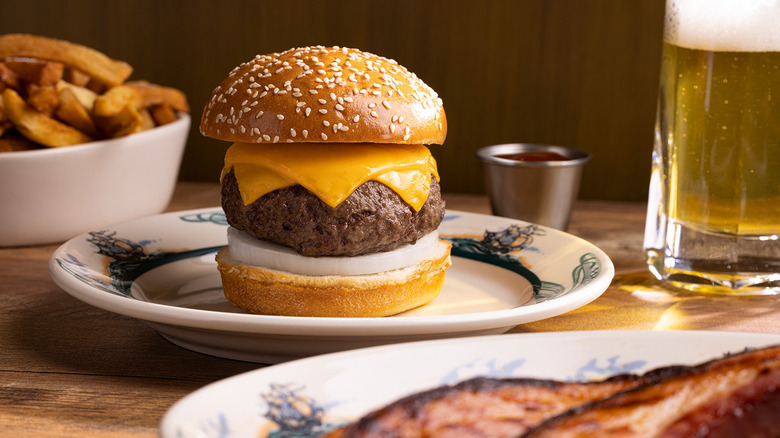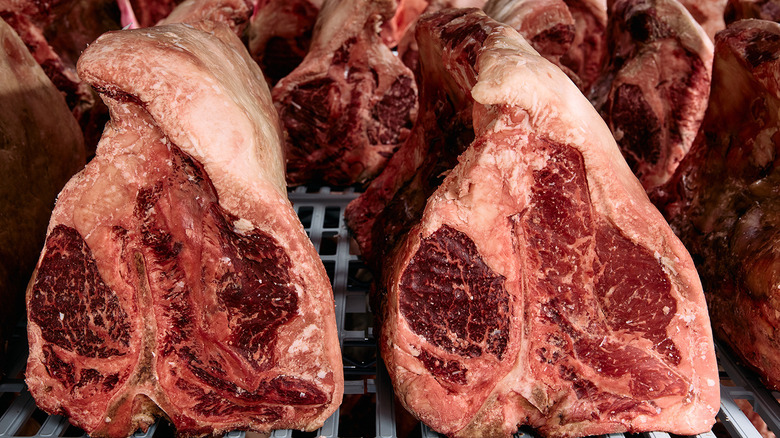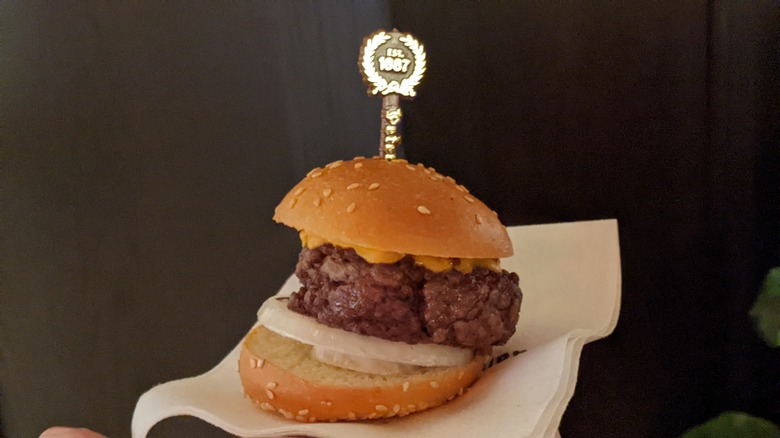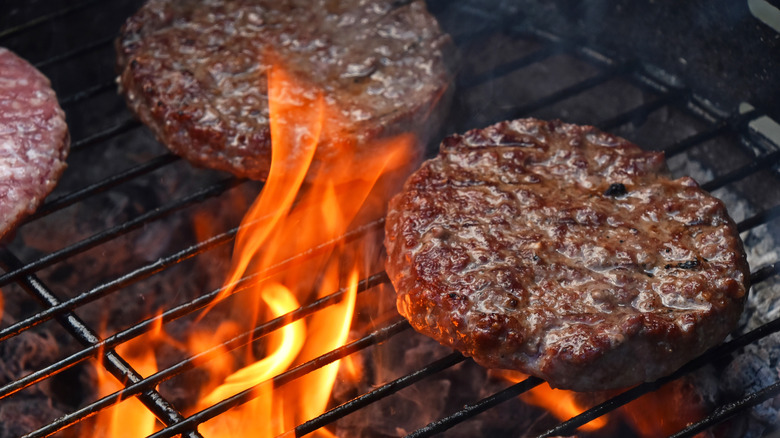The 2 Secrets That Make Peter Luger Burgers Better Than Yours
Confession time: When Caesar's Palace recently invited Tasting Table out to Vegas to try the new Peter Luger location, your author had never sampled the famous New York steakhouse's burger.
The thing is, while it's fairly easy to make great burgers and steaks at home by following a few simple rules, it always feels that dining out on the town burdens you as a customer to order what you can't make yourself or at least can't make nearly as well. And as Daniel Turtel, Luger's vice president, told us there in Vegas, his restaurant has few secrets, just some natural advantages in making a steak, including a broiler that gets up to 1000 F. In the face of a sear like that over dry-aged deliciousness, why wouldn't we always default to ordering steak?
Well, the answer all along was that nobody makes a burger quite like Luger does. While we internally and perpetually debate Minetta Tavern and Raoul's for the city's best burger, the Brooklyn steakhouse has a couple of advantages even other restaurants are frequently hard-pressed to replicate. If you're based in New York and craving a great hamburger, you've got options, but here's why you just may want to take a trip out to Williamsburg for lunch instead of setting off your tiny kitchen's smoke alarm. And yes, we tried the burger at last.
Luger's burger grind uses trimmings from aged beef
Much of the flavor in the famous Peter Luger burger comes from the fact that it's using a resource most people don't have access to at home: dry-aged steak. Turtel is the great grandson of Sol and Marsha Forman, whose devotion to how great beef can be revitalized the shuttered steakhouse into the New York City institution it is today. The restaurant has stayed a family affair ever since, and Turtel knows his trade by heart. Everyone at Luger knows how to select the best of the best, even among Prime-grade meats for dry aging.
"We actually don't have a ton of secrets," Turtel says. "We just buy the best beef and age it in a very exacting way. We have tons of monitors in there. We're monitoring temperature, we're monitoring humidity. We have air-flow monitors. Everything is exact, and we're making sure that when it comes out, it's the right way."
The trimmings from those steaks don't go to waste when it's time to pare the big cuts down to cook. They're ground in with USDA Grade-A chuck roast to create an instantly flavorful blend of burger meat that offers funky, earthy umami from the beef's own enzymes and good mold.
Aging steak is hard and even dangerous work — a dilettante's fridge biome can't achieve a tasty result. Even if it did, would you devote that much time and space in your fridge to slash a single dinner's cost?
Luger uses a special type of fat
The chefs at Peter Luger are maestros of fat, whether it's whipping up the thickest whipped cream, using only beef fat for all of their fried foods, or clarifying their own butter to sizzle their steak servings in. "We spend a lot of hours rendering beef fat," Turtel says, "which is a pain, but it really makes the flavor."
So it's not only that the fat in your burger comes from a dry-aged steak that's had time for bacteria to go to work. It's also that Luger goes out of its way to purchase its supply of steak meat with a good amount of fat. These trimmings have a unique advantage in a burger, according to Turtel.
He says that the fats around the kidneys have a structure that clings to proteins. The benefit of using them in ground meat is that the fats won't run out. The burger stays juicy without losing moisture, and each bite satisfies the protein-coated flavor without coming across as greasy. Additionally, its static position means the bun doesn't get soggy.
Funny enough, for all of the monitoring, Luger doesn't hit a certain fat-to-protein grind balance by weight or percentage. Turtel says the burger has a bigger fat content than many, but the kitchen isn't targeting a hard ratio.
Can you replicate a Peter Luger burger at home?
Here's the thing: no. More technically, you could probably solve for most of the problems and replicate close enough conditions to get most of the way there on a budget. If you've got an Ooni pizza oven, you might be able to broil your burgs at 1000 degrees or more and pull 'em out before the insides overcook. You can buy prime chuck roast of extraordinary quality, and might even cut a good deal with the butcher for just the trimmings from their dry-aged steaks. And if you're selective in your sourcing while you're there, you might get them to specifically save you the kidney fat.
But don't feel too bad. Turns out a lot of this world's best burgers taste better than what you make at home unless you are a talented rat, aka "Ratatouille," who lives in the walls of a restaurant.



